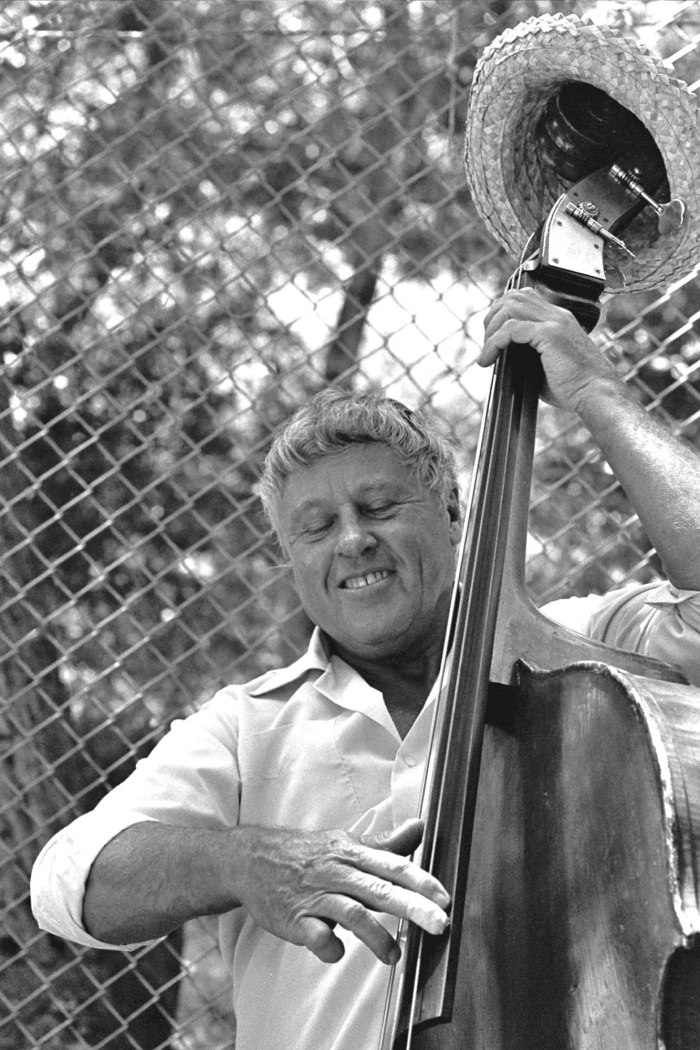Posts Tagged ‘Bay Area’
Professionalism and Creativity
 Once in the late 1950s, when our friend, the bassist “Squire” Girsback, was on the road as a member the Louis Armstrong All Stars, Squire invited us to his home on the San Francisco Peninsula to enjoy red beans and rice and meet the great man.
Once in the late 1950s, when our friend, the bassist “Squire” Girsback, was on the road as a member the Louis Armstrong All Stars, Squire invited us to his home on the San Francisco Peninsula to enjoy red beans and rice and meet the great man.
Louis was sitting on the floor in a back bedroom with his pants legs rolled up and a big plate of the beloved New Orleans dish in his lap. He was glad to meet Squire’s friends but looked slightly sheepish at first because he was hiding from a road manager one of whose jobs was to prevent Louis, who was afflicted with stomach problems, from eating the wrong foods, including such good ole spicy n’owlins fare.
I was not yet a photographer, but would soon become one, and would meet Armstrong one more time — in 1962, at Rutgers University — and photograph him there. The picture on this page was never printed until 2014, 52 years later. A print of it is going to the unique Louis Armstrong archive in Queens, New York, and another will be donated to Stanford University, whose Archive of Recorded Sound holds important jazz collections. These include those of the San Francisco Traditional Jazz Foundation, the original Monterey Jazz Festival tapes, and the over 400 Jim Cullum radio shows which Stanford has been streaming free worldwide, 24 hours a day.
Squire, in semi-retirement, sometimes regaled us with stories of those two years with Louis — the highlight of the bass man’s life. Constantly playing one night concerts in huge auditoriums on the road, the All Stars used a set routine, like most successful touring shows. Squire told us the players mostly played the same notes, in the same places, with the same crowd-pleasing antics, every night. With some exceptions — especially Satch. Now and then, Louis would seemingly receive some message from outer space and blow — or sing — a flurry of notes Squire never heard before or since. The band just kept the same routine going, but Squire would answer these flourishes with a special flurry of his own, which caused “Pops” — who heard everything happening in his band at all times — to turn and give his bass man a big wink. Squire carried those winks in his heart until the day he died.
Professionalism in any field means producing, or reproducing, a reliable product. Careful preparation, good chops and perfect execution. Big bucks in the top echelon of the entertainment industry is no different in this respect from bands remaining stable, and stable enough to get invited back every year to established festivals.
But is this middlebrow predictability not fundamentally in conflict with a premise of jazz, namely spontaneity? Many musicians will tell you that some of the great moments in jazz happen out of the limelight, in dim bars or backroom settings allowing for creative chemistry — happy accidents. Which means leaving open the possibility for bands and players to depart from expected routines, even at the cost of the occasional wrong chord or creative “mistake.” Dimly lit Bay Area joints like Pier 23 and Café Borrone and Nick’s and Berkeley’s old Monkey Inn are and were the seedbed for such creativity. As were, in the whole history of jazz, a precious few record labels, and leaders whose DNA understands not only reliability but freshness.
Louis’ crowd-pleasing was the opposite of a circus routine. It flowed directly from his heart in communication with other hearts — from an understanding, in his personal DNA, which was inseparable from the DNA of New Orleans jazz, that this music is about a kind of inner and outer openness in which spontaneity is key.
 Squire Girsback, San Francisco Peninsula, 1970s © William Carter
Squire Girsback, San Francisco Peninsula, 1970s © William Carter
Copyright statement: William Carter papers, © Stanford University Libraries. Click here for a detailed usage guide.